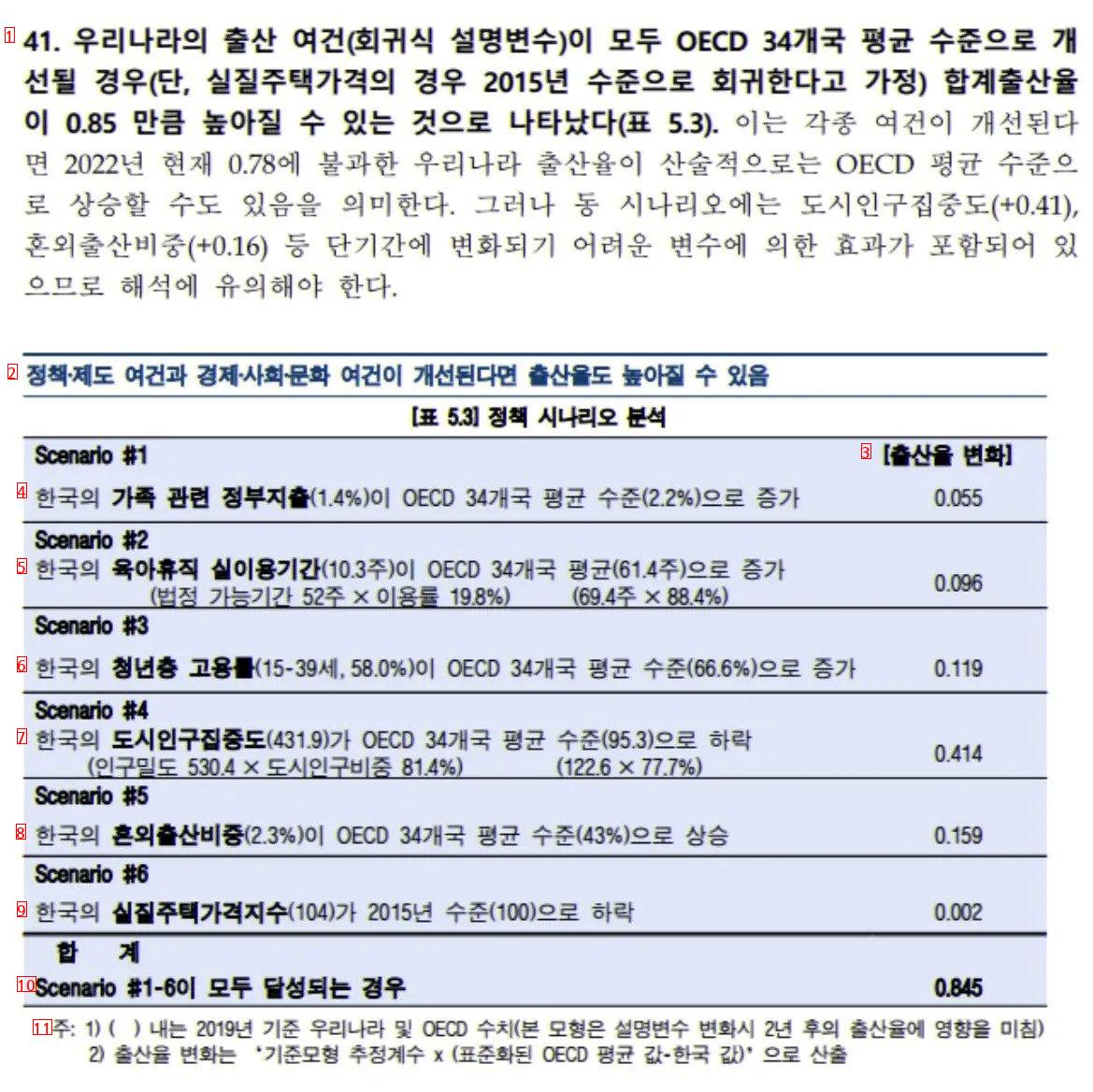
image text translation
(1)41 If all explanatory variables in Korea’s fertility conditions regression equation improve to the average level of 34 OECD countries, the total fertility rate of the assumption that real housing prices return to 2015 levels could increase by 085Table 53 This means that if various conditions improve, Korea’s fertility rate, which is only 078 as of 2022, may arithmetically rise to the OECD average However, this scenario includes effects caused by variables that are difficult to change in a short period of time, such as urban population concentration 041 and the proportion of out-of-wedlock births 016, so attention should be paid to interpretation
(2)Table 53 Analysis of Policy Scenario that if policy and institutional conditions and economic, social, and cultural conditions improve, the fertility rate may also increase
(3)a change in childbirth
(4)Korea’s family-related government spending has increased to an average level of 22 in 34 OECD countries. Scenario #2
(5)Korea’s actual use of parental leave increased from 103 weeks to an average of 614 weeks in 34 OECD countries. The legal availability period of 52 weeks X utilization rate 198 694 × 884
(6)Korea’s youth employment rate of 15-39 years old has increased to an average level of 666 in 34 OECD countries. Scenario #4
(7)Korea’s urban population concentration declined to an average level of 953 in 34 OECD countries. Population density 5304 × urban population ratio 814
(8)Korea’s share of uncommon births rose to an average of 43 in 34 OECD countries, Scenario #6
(9)Korea’s real housing price index 104 falls to 100 level in 2015
(10)If both Scenario #1-6 are achieved
(11)As of 2019, Korea and OECD figures. This model affects the fertility rate after two years when the explanatory variable changes. 2 Changes in fertility rates are calculated as the reference model estimation coefficient x standardized OECD average value-Korea value
1 Estimated fertility rate 0055 when family-related government spending is expanded to the current 14→22 OECD average
2. Estimated fertility rate 0096 when the actual period of parental leave is extended to the OECD average of 103 weeks → 614 weeks
3 If the employment rate of young people aged 15 to 39 is increased to the current 580→666 OECD average, the expected fertility rate 0119
4 Urban population concentration in Korea If the national population density urbanization rate falls from the current 43195304814 to the OECD average of 9531226777, the expected fertility rate 0414
5 If the rate of out-of-wedlock births in Korea increases from the current 23 to the 43 OECD average, the expected fertility rate is 0159
6 If Korea’s real housing price index 104 falls to the level of 100 in 2015, the expected fertility rate 0002
Estimated fertility rate when achieving both 1-6 is 0845